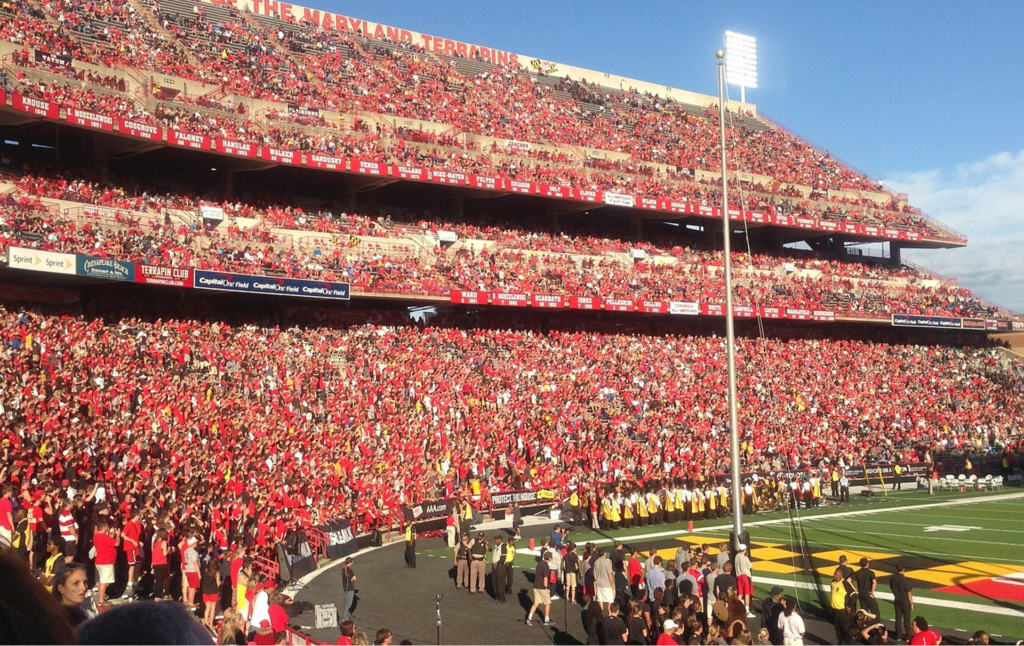College football fans follow preseason futures odds to understand how the next season might unfold. These early lines give insight into which teams are viewed as strong contenders and which programs might surprise analysts. Futures odds are posted long before kickoff and stay active throughout the regular season.
For anyone new to this space, learning what these numbers represent and what shapes them can make following the sport more engaging.
This layman’s guide breaks down how futures odds work, what drives changes over time, and how fans interpret these markets – without all the confusing complexity.
What Futures Odds Represent in College Football
Futures odds reflect how likely a team is to reach a specific milestone. That could include winning the national title, making the College Football Playoff, or claiming a conference title. These numbers are based on team performance projections and public sentiment before any games are played.
For example, if one team is listed with lower numerical odds compared to others, it means oddsmakers see them as more likely to reach their goal.
Higher numbers usually indicate lower preseason expectations. These odds help map the competitive landscape and show how different programs are perceived in the months, weeks, and days leading up to kickoff.
Futures odds also extend to other categories, including win totals or individual player recognition like the Heisman Trophy. These options allow fans to follow longer-term developments throughout the season.
What Causes Odds Movement
Several key factors impact how CFB futures odds are initially set and how they shift over time. The most common inputs include how a team finished the previous season and which players are returning, especially at pivotal positions like quarterback.
Team-Based Variables That Shift Odds
Returning quarterbacks and veteran offensive lines often lead to stronger projections. A well-rounded defense with returning starters can also influence movement. Recruit rankings also play their part, especially when a program signs multiple high-impact prospects. Coaching stability or a new coordinator also alters expectations early in the cycle.
Injuries or departures in the transfer portal shift perceptions fast. A key player ruled out for the season can push a team’s outlook down significantly. Teams that overachieved in the previous year may also see an adjustment once projections settle back to average.
External and Market-Driven Influences
Fan excitement, media coverage, and national buzz all move lines. Sportsbooks often adjust numbers based on attention and ‘buzz’ rather than strictly analytical models. If one program gets spotlighted by analysts or surges in preseason polls, its odds reflect that momentum.
Spring games and media day pressers bring new info into the mix. Fans tracking headlines, roster shifts, or training updates may notice small but meaningful adjustments. These external drivers, while less measurable, have a large influence on how sportsbooks maintain balance across their boards.
Types of Futures Bets in College Football
The most common futures bet in CFB is centered on which team will be at the top by the end of the season. Other futures focus on conference races, where fans track the Big Ten, SEC, Pac-12, Big 12, and ACC to see which program might finish first.
Some markets focus on playoff placement rather than season outcome. These give fans a chance to track how teams progress toward that top four, which adds another narrative layer to the regular season.
Futures are also offered for regular-season win totals. These bets are tied to the projected number of victories a team will collect. This type of futures option usually appears closer to the season’s start and gives a week-by-week perspective across all matchups.
Common types of futures markets include:
- National title winner,
- Conference champion,
- College Football Playoff qualifier,
- Season win totals,
- Heisman or major player awards.
Each type of market gives fans a different way to follow their teams through the full season arc.
Weekly Developments and Market Shifts
As games begin, the futures market becomes more reactive. A team that was lower on the list may start climbing if it performs better than expected. A contender with a slow start might see their number drift lower.
Each week brings a fresh update. Most sportsbooks adjust their board on Sunday evenings, once the results of major matchups are finalized. Tracking this pattern gives fans a way to monitor momentum.
Injuries, upsets, and surprise standouts all feed into these weekly adjustments. Fans who follow latest NCAAF news will notice the early indicators that influence these movements. This could be anything from a standout performance to a key player missing practice.
Over time, these updates tell the story of the season in numbers. Watching them unfold alongside team performance creates a deeper connection to the race for the playoffs.
When Fans Tend To Lock In Their Choices
The off-season period is when many fans take a position on the futures board. In the spring and early summer, odds tend to reflect early assumptions, and there’s more variation between teams.
Once the first few games are played, the board tightens. Teams that start strong tend to rise, while those that stumble may shift lower. This pattern repeats weekly, which gives fans new reference points as the season progresses.
Some wait for mid-season adjustments, especially if a strong team experiences an unexpected loss or coaching setback. Watching the timing of these shifts gives fans context for how expectations evolve throughout the calendar.
Keeping an eye on team depth charts, coaching pressers, or summer training developments can help explain sudden movements or trends across the board.
Season Outlook Through the Futures Lens
Futures odds act as an unofficial preview of college football’s biggest storylines. They shape how broadcasters frame matchups, how fans build expectations, and how programs are viewed before they even step onto the field.
By watching these odds evolve, fans can understand how narratives build and shift in real time. From spring practices to conference championship weekend, every update reflects what’s happening on the field and what the broader community expects moving forward.
For anyone new to college football futures, learning how to interpret these numbers is a great way to stay connected and deepen your understanding of the game’s bigger picture.
*Content reflects information available as of 2025/08/19; subject to change.

 Gary Coxtersons brought his technical expertise to the development of Hype Gamble Match, ensuring the platform’s robust functionality and smooth operation. With a deep understanding of web development and platform integration, Gary was pivotal in building the backend systems that allow for real-time updates and a seamless user experience. His contributions have made it possible for users to access the latest betting odds, insights, and strategies effortlessly, supporting the overall success of the platform.
Gary Coxtersons brought his technical expertise to the development of Hype Gamble Match, ensuring the platform’s robust functionality and smooth operation. With a deep understanding of web development and platform integration, Gary was pivotal in building the backend systems that allow for real-time updates and a seamless user experience. His contributions have made it possible for users to access the latest betting odds, insights, and strategies effortlessly, supporting the overall success of the platform.